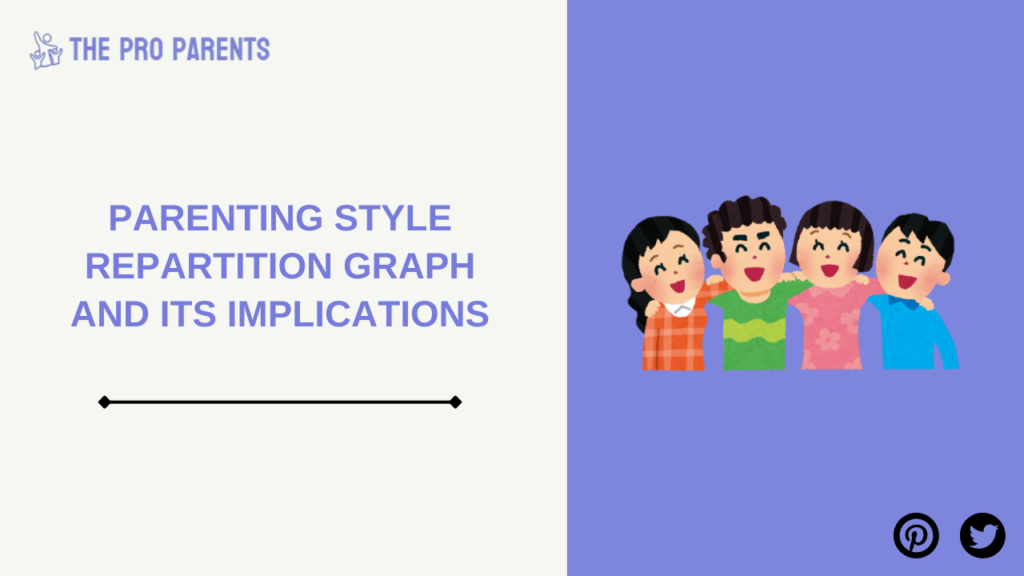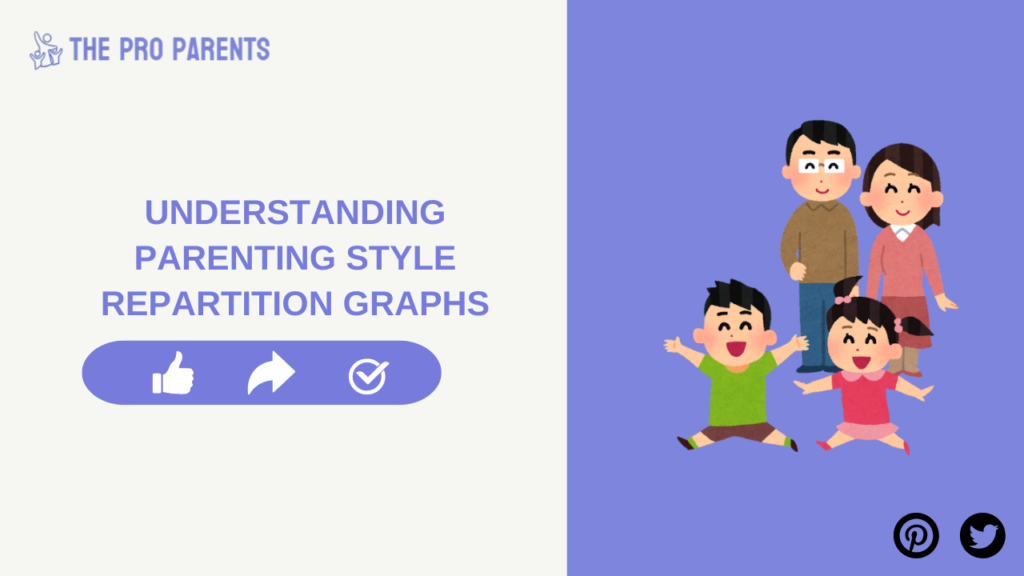Parenting is both a science and an art. The choices you make as a parent shape your child’s emotional, social, and intellectual development. But did you know that parenting styles significantly impact your child’s growth? Understanding these styles—and how they align with your approach—can help you make more informed decisions along the way.
Table of Contents
One effective tool for exploring this topic is the parenting style repartition graph. It visually breaks down different parenting methods, illustrating their impact on children. This blog dives into what parenting style repartition is, explains key styles, and provides actionable insights to help you choose the most effective approach for your family.
What Is Parenting Style Repartition?
The term parenting style repartition refers to how various parenting strategies are distributed across different families or groups. Think of it as a way to visually explore the four primary parenting styles—authoritative, authoritarian, permissive, and uninvolved—and their presence in the population. Using a parenting style repartition graph helps parents and experts analyze trends and understand how cultural, social, and personal factors influence parenting decisions.
The Four Major Parenting Styles
Developed by psychologist Diana Baumrind, the four primary parenting styles are:
- Authoritative: Balances high responsiveness with high expectations; emphasizes communication and mutual respect.
- Authoritarian: Focuses on strict rules and high expectations, often with little emotional warmth.
- Permissive: Highly nurturing and lenient, with minimal demand for structure or rules.
- Uninvolved: Low responsiveness and low expectations, often marked by neglect or detachment.
These styles are typically represented in graphs showing how they are distributed among various groups. For example, a graph may reveal a higher tendency for permissive parenting in younger parents or highlight cultural differences in the prevalence of a particular style.
Curious to learn more about your child’s well-being? Check our guide on Is It My Fault My Kid Has Cavities?
The Four Key Parenting Styles Explained

Each parenting style comes with unique characteristics and outcomes. Understanding them in detail is key to discovering where your approach fits on the parenting style repartition graph.
1. Authoritative Parenting
- Characteristics: Combines warmth and responsiveness with firm boundaries. Parents enforce rules but remain flexible and open to discussion.
- Impact on Children: Often leads to confident, well-adjusted children who excel socially and academically.
- Example: Setting rules around screen time but explaining why they matter and being willing to tweak them as kids grow.
2. Authoritarian Parenting
- Characteristics: Highly structured and rule-focused, with little room for negotiation. Parents utilize discipline as a primary tool.
- Impact on Children: Can result in obedience but may also lead to lower self-esteem and difficulty handling failure.
- Example: Enforcing strict curfews without considering context or exceptions.
3. Permissive Parenting
- Characteristics: Lots of nurture and warmth but minimal enforcement of rules and expectations.
- Impact on Children: Encourages creativity but may lead to poor self-regulation and struggles with authority.
- Example: Allowing unlimited access to candy because “kids should indulge sometimes.”
4. Uninvolved Parenting
- Characteristics: Little to no involvement in a child’s life, with a lack of both discipline and nurture.
- Impact on Children: Can result in emotional detachment and difficulty forming strong connections later in life.
- Example: Missing parent-teacher conferences and leaving children to care for themselves.
Visualizing these styles in a parenting style repartition graph provides a deeper understanding of how different strategies influence development over time.
Quick tip! Learn common dental care mistakes parents overlook in our post Why Do Kids Have Silver Teeth?
Parenting Style Repartition Graph and Its Implications

A parenting style repartition graph is more than just data; it’s a window into broader societal dynamics. Using this graph, parents and researchers can:
- Identify trends (e.g., growth in authoritative parenting due to increased parenting education).
- Understand how factors like age, cultural background, and socioeconomic status influence parenting styles.
For instance, a graph might show that families in higher-income groups lean toward authoritative parenting, while those in high-stress environments may use authoritarian strategies.
This graph helps parents see where their approach stands compared to others, offering valuable insights for self-reflection and potential adjustments.
Want localized insights? Check Chelsea Acton’s Famous Parenting Tips for examples of real-world strategies!
How Parenting Styles Affect Emotional and Social Development
Parenting styles shape more than daily habits—they deeply affect your child’s emotional and social well-being.
- Authoritative parents tend to raise children who are confident, empathetic, and independent, often excelling academically.
- Authoritarian parents may cultivate rule-following but risk fostering resentment or anxiety.
- Permissive parenting often results in children struggling with impulse control or avoiding responsibilities.
- Uninvolved parenting can lead to emotional challenges, including struggles forming healthy attachments.
Understanding how your parenting choices affect your child’s emotional intelligence and social behavior is critical for fostering long-term success and happiness.
Choosing the Right Parenting Style for Your Family
There’s no one-size-fits-all answer when it comes to parenting—they’re called styles for a reason! Here are some tips to find the right balance:
- Consider Your Child’s Personality: Is your child more independent or do they thrive on structure?
- Be Open to Adjustment: Life circumstances change, and so do children’s needs.
- Balance Nurture with Discipline: Being warm doesn’t mean being permissive!
Remember, flexibility is key. You’re not locked into one style forever—your approach can (and should) evolve as your child grows.
For example, authoritative parents might tighten discipline for younger children, then gradually shift to a more permissive approach as their teen demonstrates responsibility.
Bonus read! Master flexible transitions in How Parenting Styles Change as Children Grow
Common Mistakes—and How to Avoid Them

Even the best parents stumble. Common errors include:
- Leaning into one style too heavily.
- Ignoring feedback from children (yes, they have needs and preferences!).
- Fear of appearing too “soft” or too “strict.”
Every day is a chance to recalibrate your approach. Don’t be afraid to ask for help or seek out community resources for support.
Pro tip! Learn to avoid eco-parenting pitfalls with our in-depth guides on modern family priorities.
The Role of Culture in Parenting Styles
Parenting is deeply shaped by cultural norms and expectations. Factors like collectivism, individualism, and extended family dynamics contribute heavily to style selection.
For instance, in collectivist societies, authoritarian styles may dominate due to the heavy influence of familial hierarchy. Meanwhile, Western cultures often favor authoritative and permissive approaches, focusing on emotional development and individuality.
By studying cultural parenting practices, we gain a richer perspective on the diversity of family life—and insights to broaden our own approaches.
Finding Your Family’s Balance
Parenting is a lifelong transformation, full of adjustments and learning opportunities. No two parents—or children—are the same. Use tools like the parenting style repartition graph thoughtfully. More importantly, trust your instincts and keep evolving.
For even more actionable tips and support, TheProParents.com is here to guide you. Visit our resource hub or explore related posts that help you adapt and grow alongside your little ones.
Happy parenting!
FAQs
What is a parenting style repartition graph?
It’s a visual tool that shows the distribution of parenting styles and their impact on child development.
How can I determine my parenting style?
Assess your discipline, communication, and responses to your child. Parenting quizzes can also help.
Can parenting styles affect a child’s future?
Yes, parenting styles influence a child’s emotional, social, and cognitive development.
Is it possible to change my parenting style?
Yes, parents can adapt their style as they learn more about their child’s needs and growth.
Why is understanding parenting style repartition important?
It helps parents adopt better strategies and create a supportive environment.



